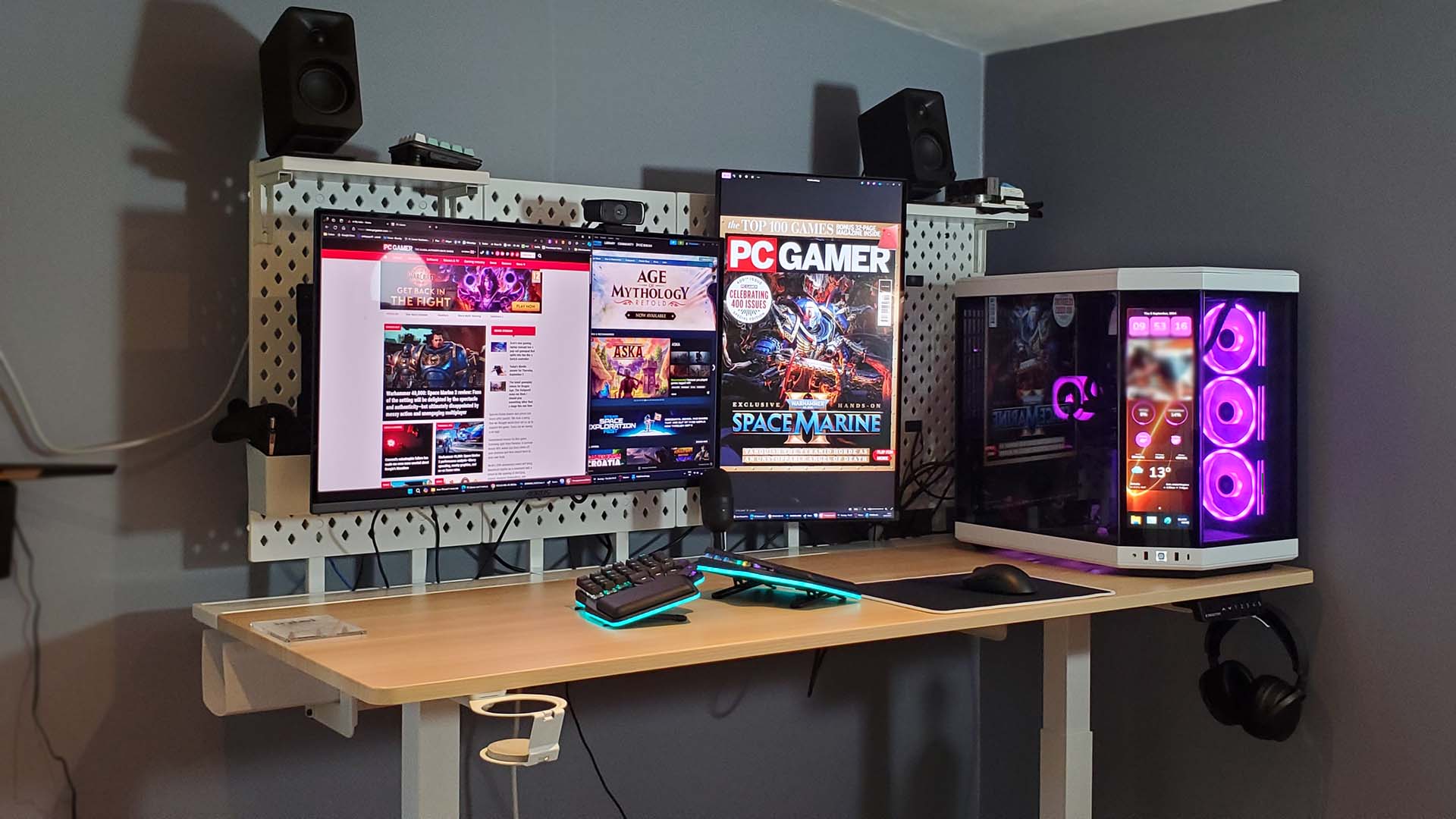Our Verdict
The Bifrost Elite 160 is a great, solid, sitting/standing desk, with a ton of configuration options thanks to its accessories ecosystem. But it is a pricey beast, matching our favourite, the Magnus Pro XL, on price and missing just a little on quality. Though it has arguably made me a better/tidier person.
For
- Comfortably large size
- Sturdy
- Good build quality
- Excellent cable tidying and routing
- Wide height range
Against
- Slightly annoying sleepy motor
- A lot of money with the accessories
PC Gamer's got your back
In the words of The Dude, it really ties the room together, man. The Bifrost Elite 160 height adjustable desk has kinda completed my new home gaming station and. For a man seemingly incapable of creating a non-cluttered work and gaming space (just ask Jacob, who has been working with me for the best part of a decade), it's also keeping me fastidiously tidy.
Who knew tight cable management, some monitor mounts, and a couple wee shelves could do that to a notoriously untidy middle-aged man, but here I am with a pristine desktop where just my keyboard, mouse, mic, and phone exist. And it feels good.
It's actually even making me think it might be worth tidying up my office desktop in PCG Towers, too. But that might be a change too far, and I don't think I can become that much of a better person in one fell swoop.
But such changes of character don't come cheap, and the Bifrost Elite 160 is a behemoth of a desk with a similar design ethos to the Corsair Platform:6, and a price that, while not quite so eye-wateringly high, is still going to sting. For the full configuration I've been testing—with a bunch of accessories marking a genuine quality of life upgrade—you're looking at $1,140.
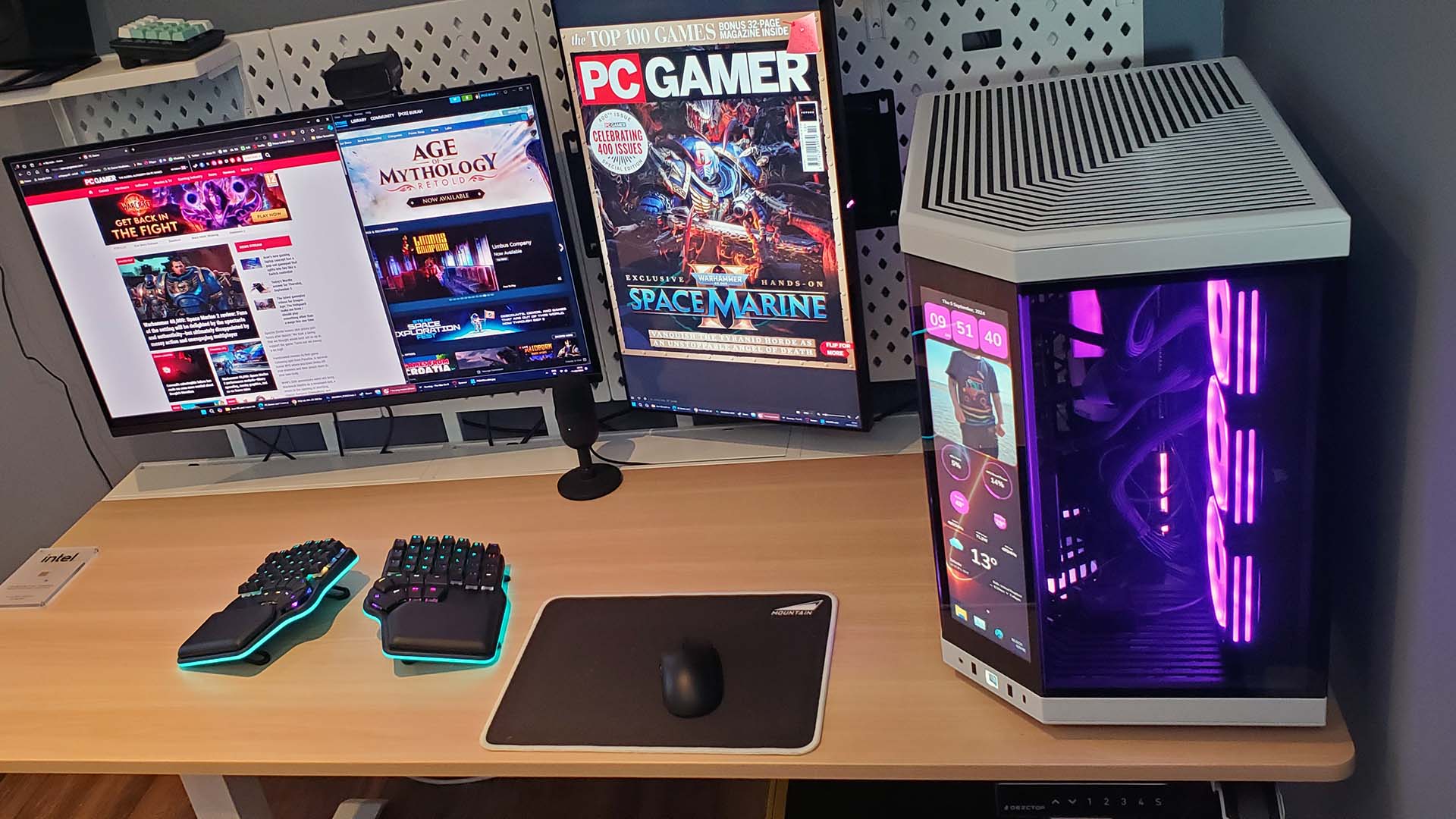
Dimensions: 63 x 28.3 x 50.4 ~ 76 inches (160 x 71.9 x 128 ~ 193 cm)
Height adjustment: 25.6 - 51.2 inches (65 - 130 cm)
Load capacity: 264.6 lbs (120 kg)
Materials: Wood Fiberboard (MDF), Steel, ABS Plastic, Aluminum, Felt
Controller: Height display, 4x memory slots
Collision detection: Yes
Price: $900 (with reviewed accessories - $1,140)
That's around the same sort of price as the mega desk of our dreams, the mighty Secretlab Magnus Pro XL, our current pick as the best gaming desk. Which does give the Dezctop desktop a bit of a problem. While it can claim to be similar, but far cheaper than the Corsair Platform:6, with all its accessories it's an effective price match to the Secretlab and honestly does suffer by comparison.
Don't get me wrong, I am impressed by the Bifrost Elite 160, and am really enjoying my time with it, but when the prices are equivalent it's only natural you start to look at the differences in them. The Secretlab oozes quality, from its magnetic cable-tidying doodads, to its ultra smooth, responsive motor, and that all-metal desktop covered with what is effectively an all leather mouse mat.
The high-density fiberboard of the Dezctop isn't quite as luxurious as the Secretlab's metal top or the thick desktop of the Platform:6. Though it is lighter, and certainly doesn't feel in any way flimsy at all. And, to be completely honest, the fiberboard top is probably what really allowed me to put the Bifrost Elite 160 together on my own. Flipping it onto its feet wasn't the spine-testing challenge that righting either the Corsair or Secretlab desks is.
I would also note that even after a good long while of regular use—and a lot of PC building and testing later—the surface is unmarked and free of any scratches or unsightly gouges. The same could not be said for the Platform:6 which suffered an almighty gash during the building process.
For a motorised desk, though, so much of the experience is about how good the transition from sitting to standing is. The Dezctop Bifrost Elite 160 comes with a three-stage leg (the cheaper Bifrost Pro 160 comes with just a two-stage leg) which allows it to shift between a wider array of heights than either the Secretlab or Corsair—taller than both and much lower than the Corsair specifically.
A lack of range was one of the things which put us off the latest four-legged Flexispot E2Q, and that extra capability to hit a lower desk height is a definite plus for the Dezctop desk.
That's actually been super handy for me, not because I'm particularly short—though it would suit a human smaller in the leg than I—but because I've taken the opportunity of having a desk I can attach a steering wheel to again to get into racing games once more. Being able to drop the height to a lower point, while sitting in a lower chair, gives me a better angle to the pedals at my feet.
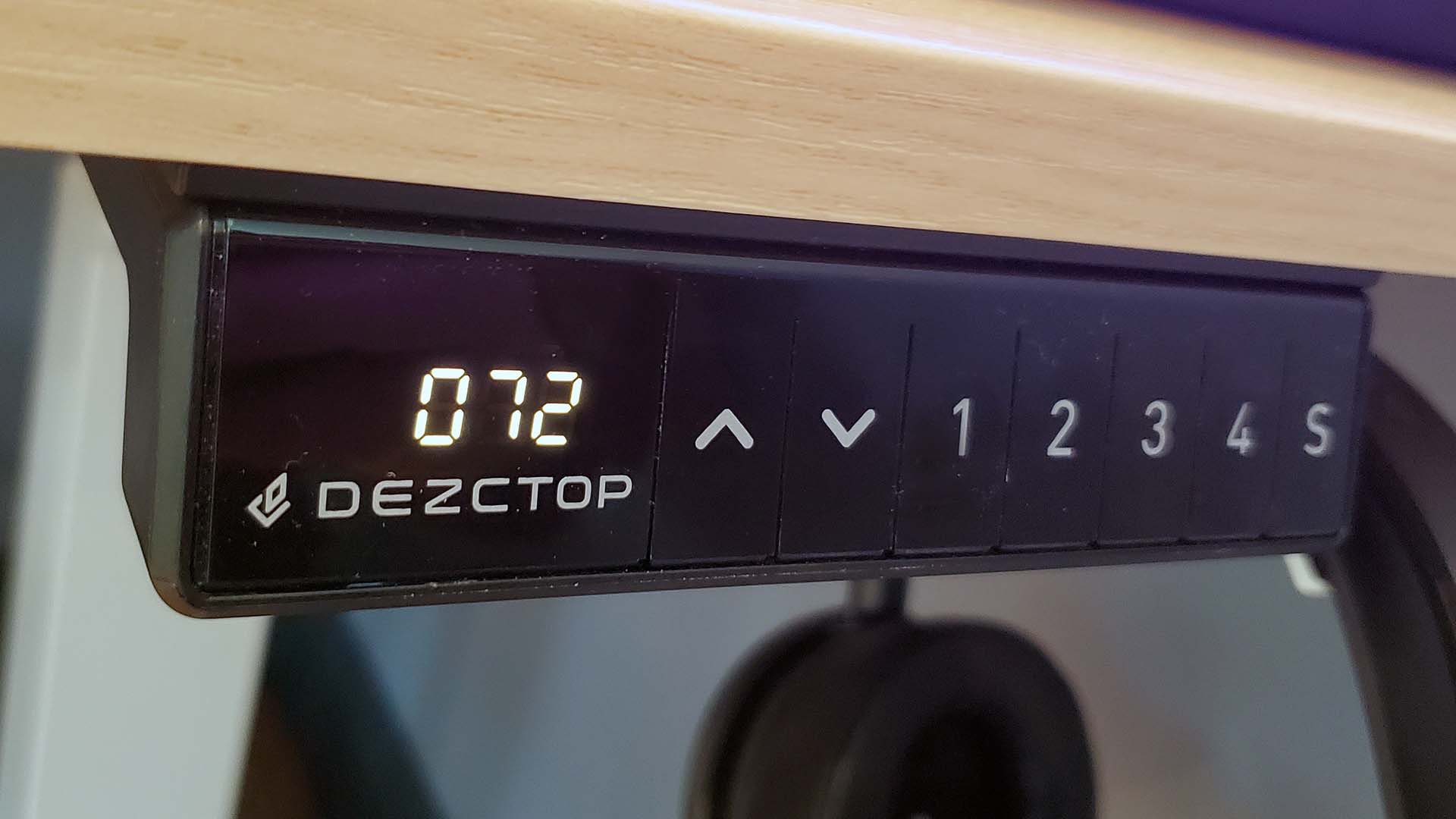
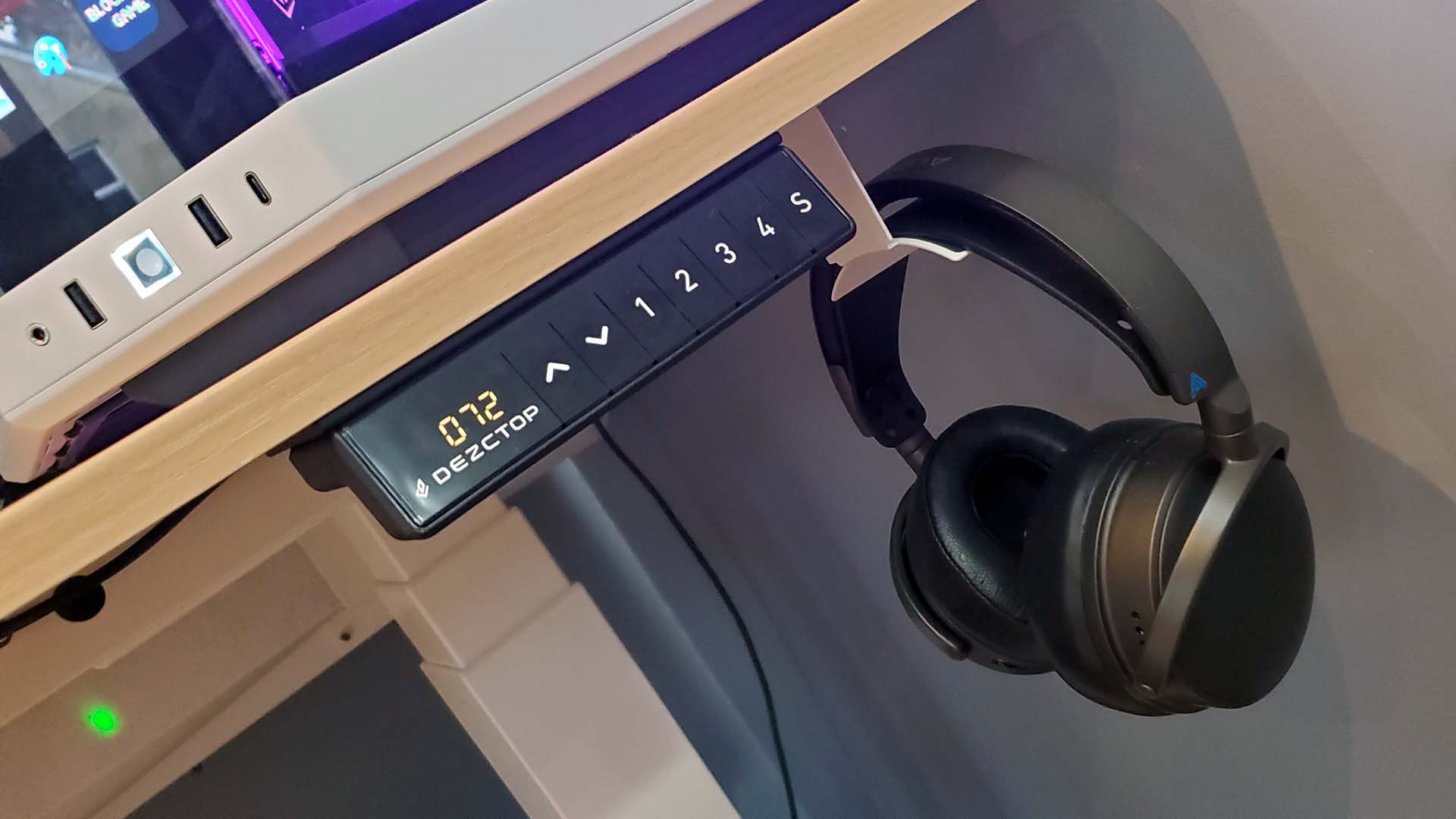
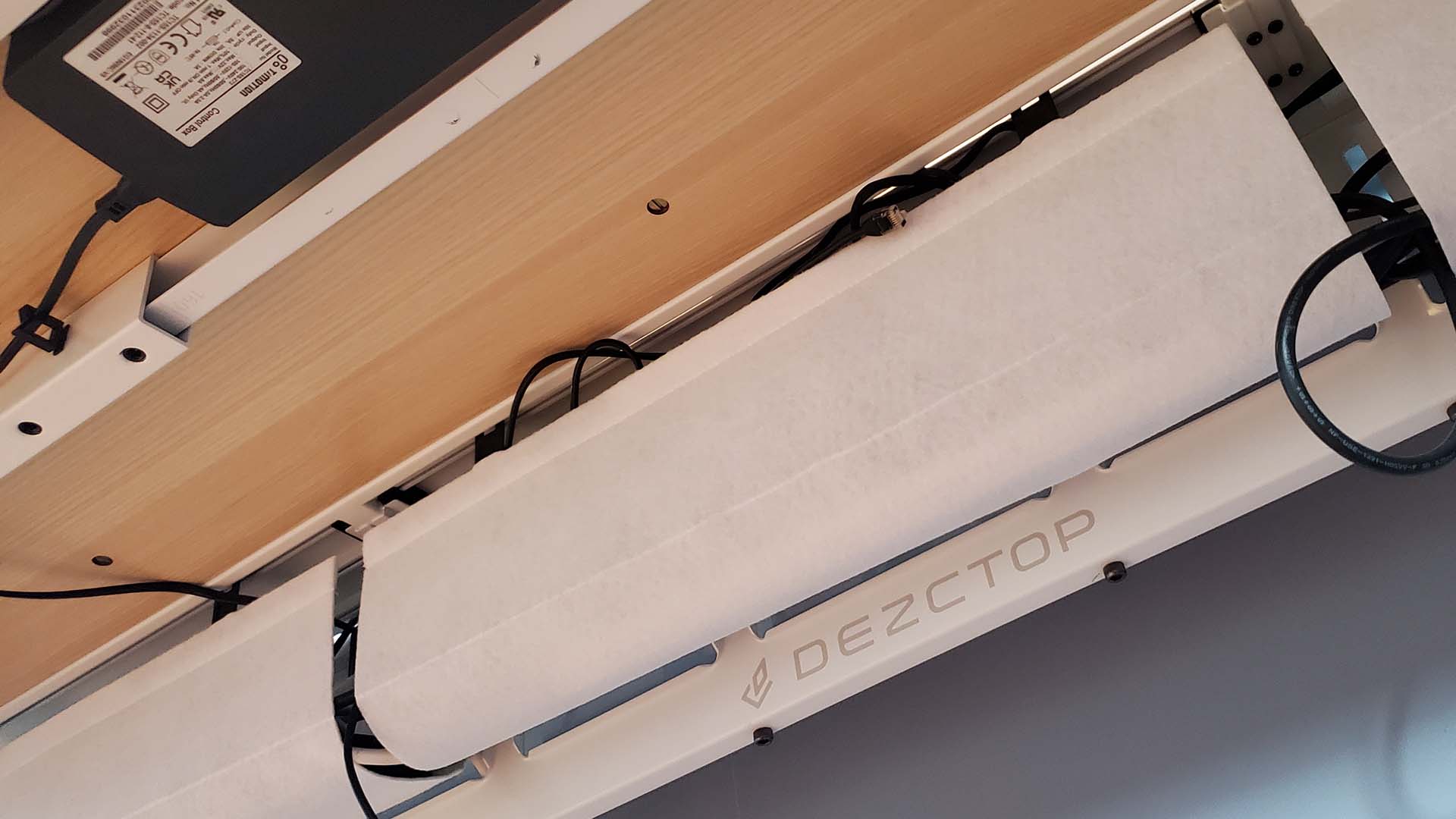
I have found myself getting frustrated by the actual action of the motor, however. The motion is smooth enough, with a deceleration that stops the desktop wobbling unduly or spilling liquid sat atop it. And the motor will cease its movement when it comes into contact with just enough resistance. It feels sometimes like a little too much resistance is needed, but that's been the same with every motorised standing desk I've ever used.
No, the frustration stems from the lag between pressing the buttons and anything happening. I suppose I understand the energy saving consideration of putting the height controller to sleep when it's not in use, but you need to wake the thing up by pressing any button on the front of it and then pressing again to get any positive reaction. That doubling up of button-pressing effort is only a minor thing, but it stops the setup from feeling responsive when you've had enough of sitting on your butt and you want to stand up for a moment.
But I love the cable management setup. Initially the felt canvas bags slung under the rear of the desk felt a bit like a cost-cutting exercise, but the soft material means there's no noise from the myriad cables writhing around in them. For this 160 cm desk, there are three separate bags stretching across the full length of the desk. Corresponding to this are three magnetic lids which can be lifted to access or jam in any errant cable. The lids slide forward and back allowing you to have leads snaking out from the rear or the front, depending on what you want to plug them into.
The space afforded the cable management is excellent, too. There's ample space for a full power extension board in there, meaning you can have a single power cable from the wall to your desk, and everything from your PC, monitors, and the motorised desk itself, hidden away. It's super neat, and it's this more than anything that has encouraged me to be a tidier version of me.
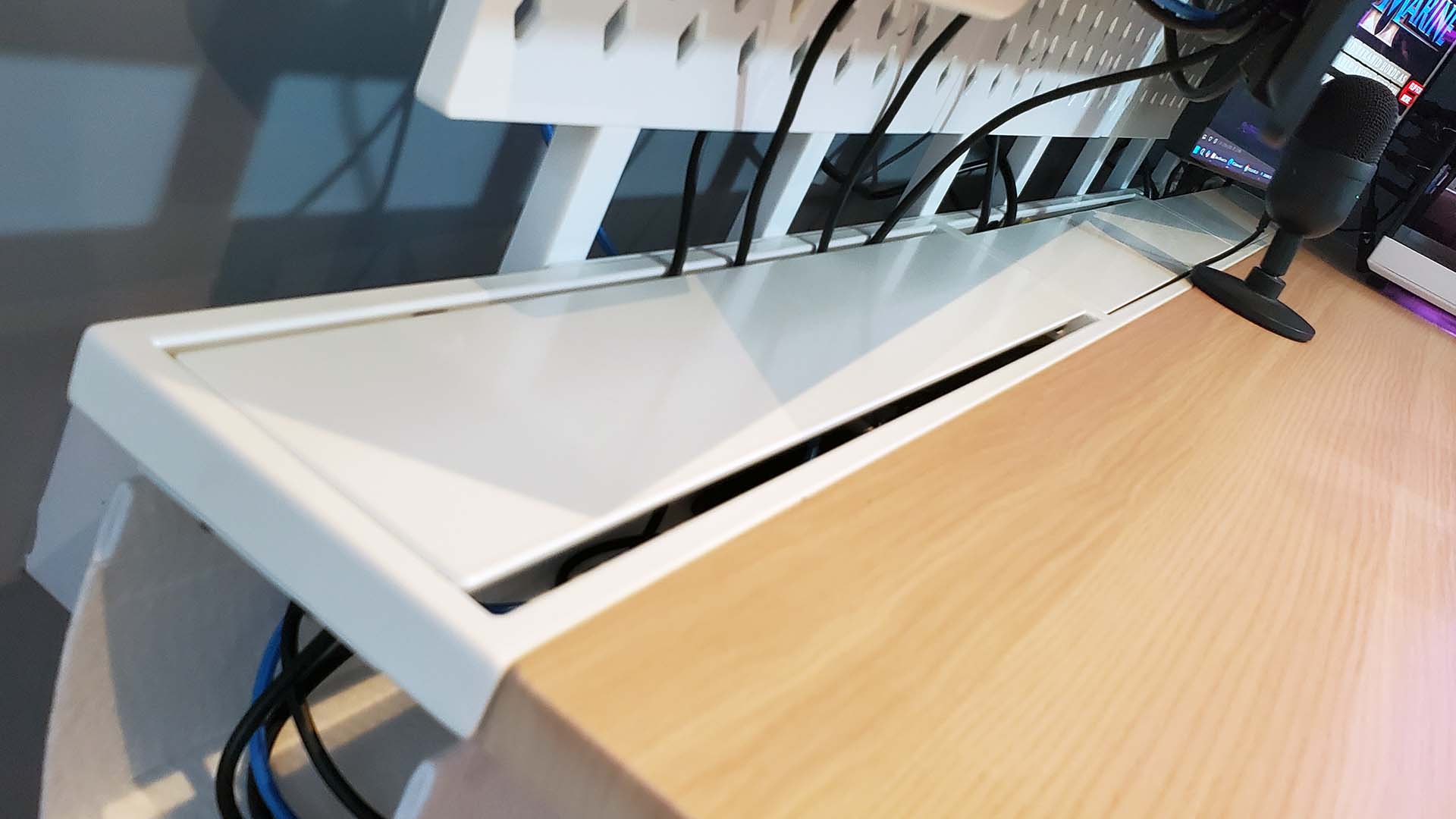
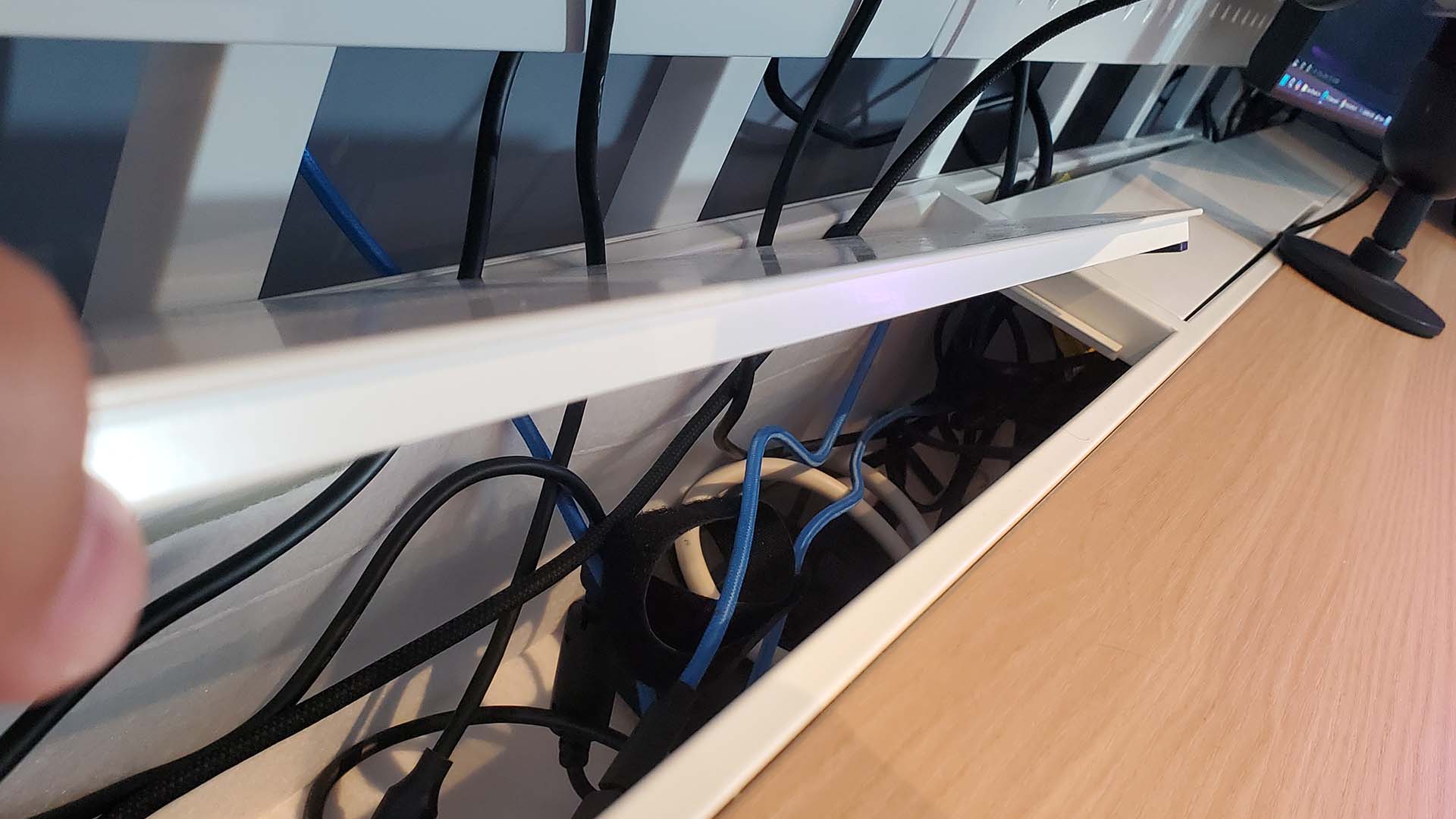
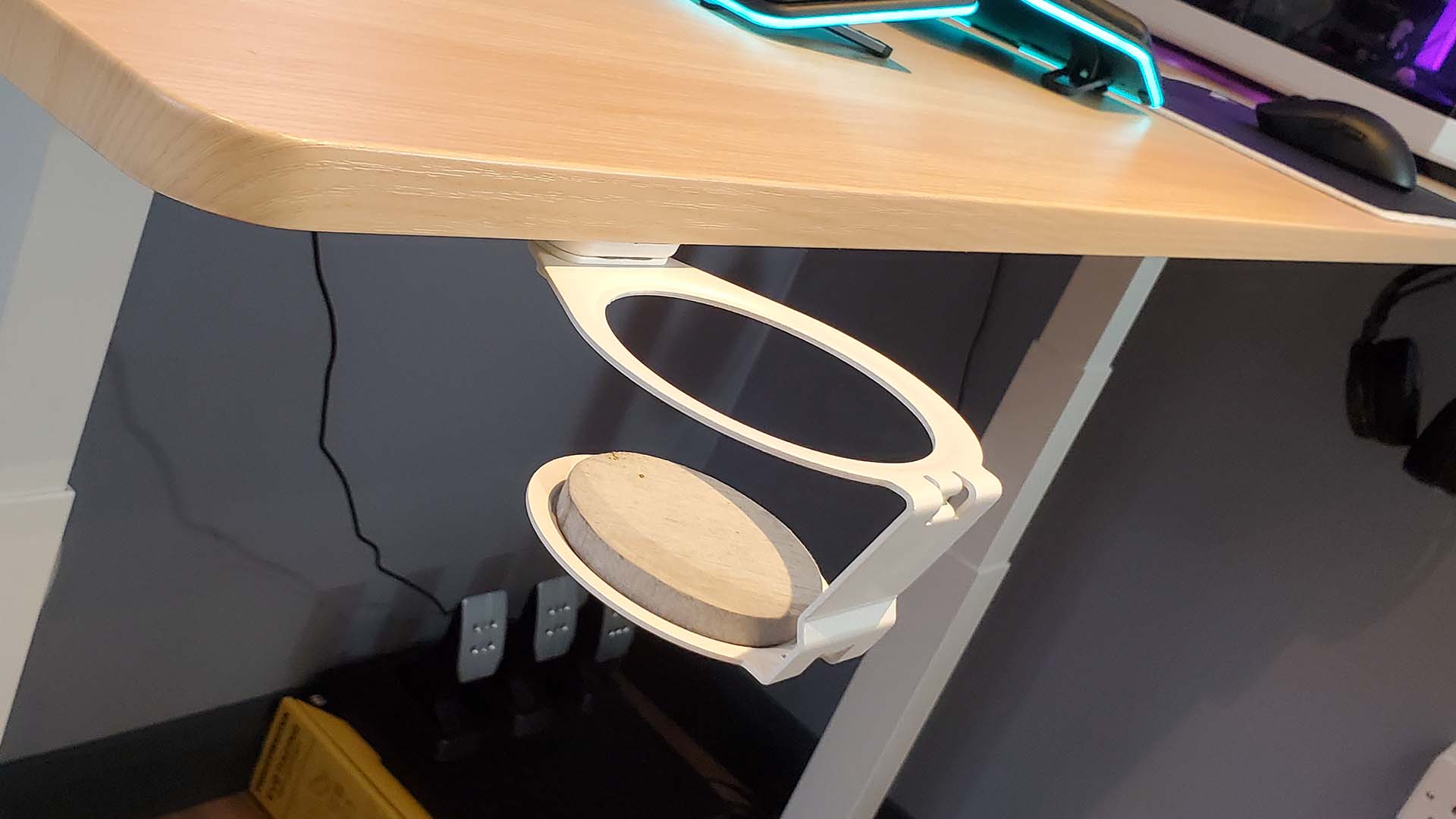

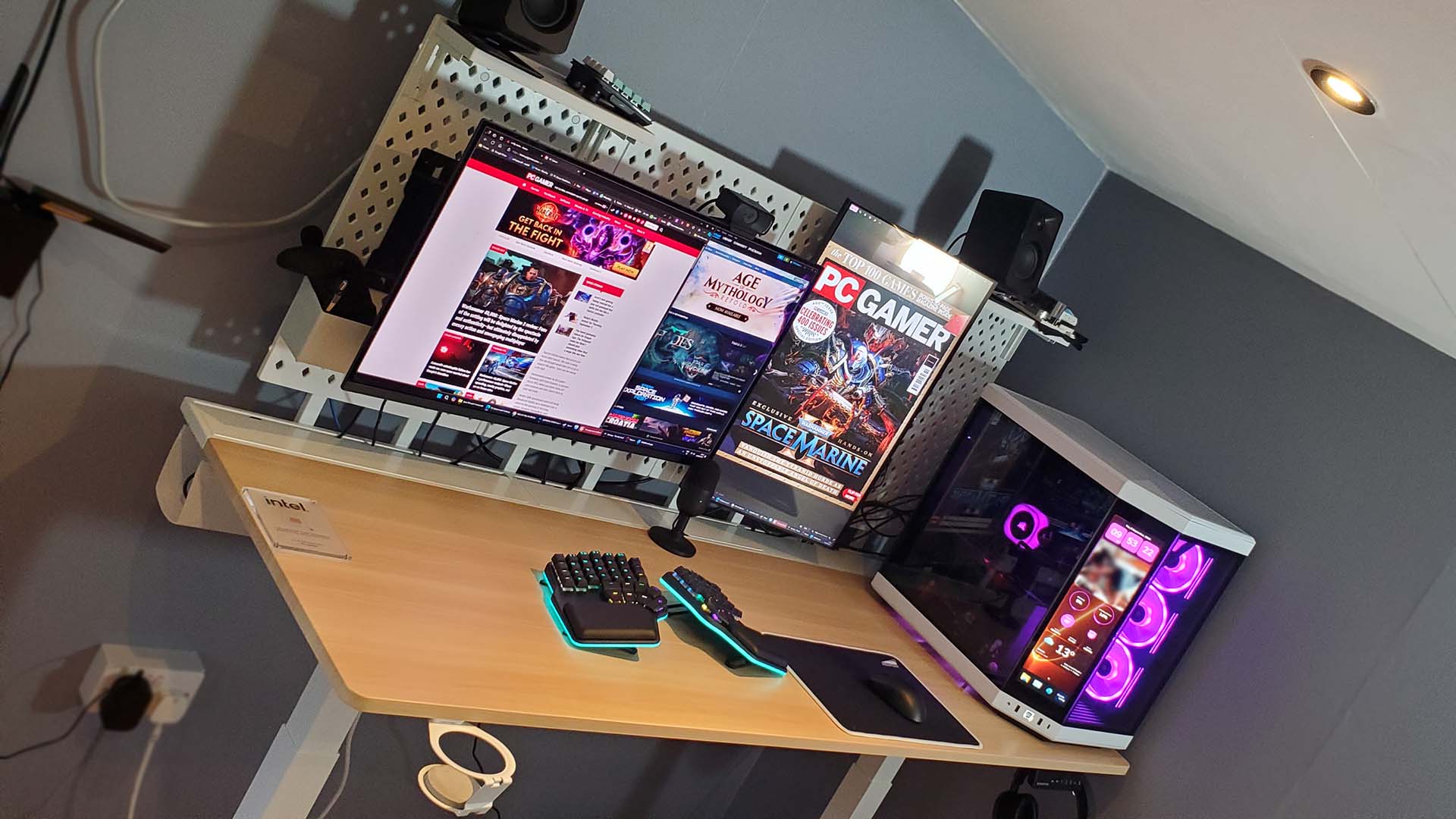
It also helps the version I've been testing has come chock full of accessories. The thing which makes the Bifrost Elite 160 feel so similar to the Platform:6 is the pegboard lifting from the rear of the desk. It's a similar setup to Corsair's, and similarly allows you to mount optional accessories to that space.
I have a little pot hooked behind my main monitor which currently houses a Windows install on a USB stick, a screwdriver, some thermal paste, a wee Kailh RGB keyswitch keyring, a pencil, the detachable mic from my Maxwell headset, my Xbox Elite Series 2 and USB dongle, as well as the 2.4 GHz dongle for a set of Logitech earbuds the location of which I couldn't tell you. That's all stuff that would have been strewn across my desktop in another life.
It also came with a pair of small shelves that I've attached at either extremity of the pegboard and upon which stand the outstanding wee Kanto Ora speakers. And the detachable numpad from my Mountain Everest 60 keyboard and on the other side a faux Lego motherboard diorama.
It also helps I've got a pair of monitor mounts which affix directly to the pegboard using a standard VESA connection, one with a 32-inch Gigabyte screen and the other with a 27-inch Dough panel. That keeps the desktop free of monitor stands, too, and it all adds up to a clean, good-looking setup, that I'm still stunned is so clear of, for want of a better phrase, my assorted crap.
I'll be straight, though, as I first set up the Bifrost Elite 160 I was heartily disappointed when it came to getting the pegboard in place. The rest of the assembly process had been really pleasing; everything was easily explained (though slightly frustratingly that it's only via an online manual) and went together easily. It all feels good quality, reassuringly solid, and robust once it's on its own two feet.
The pegboard, however, feels incredibly flimsy. It's a plastic board with a metal frame, and comes in four parts for this 160 cm desk, and given that I knew I was going to attach a couple of monitors that I really didn't want ending up face down on my desktop after slipping their plastic mounting, I will admit I was concerned.
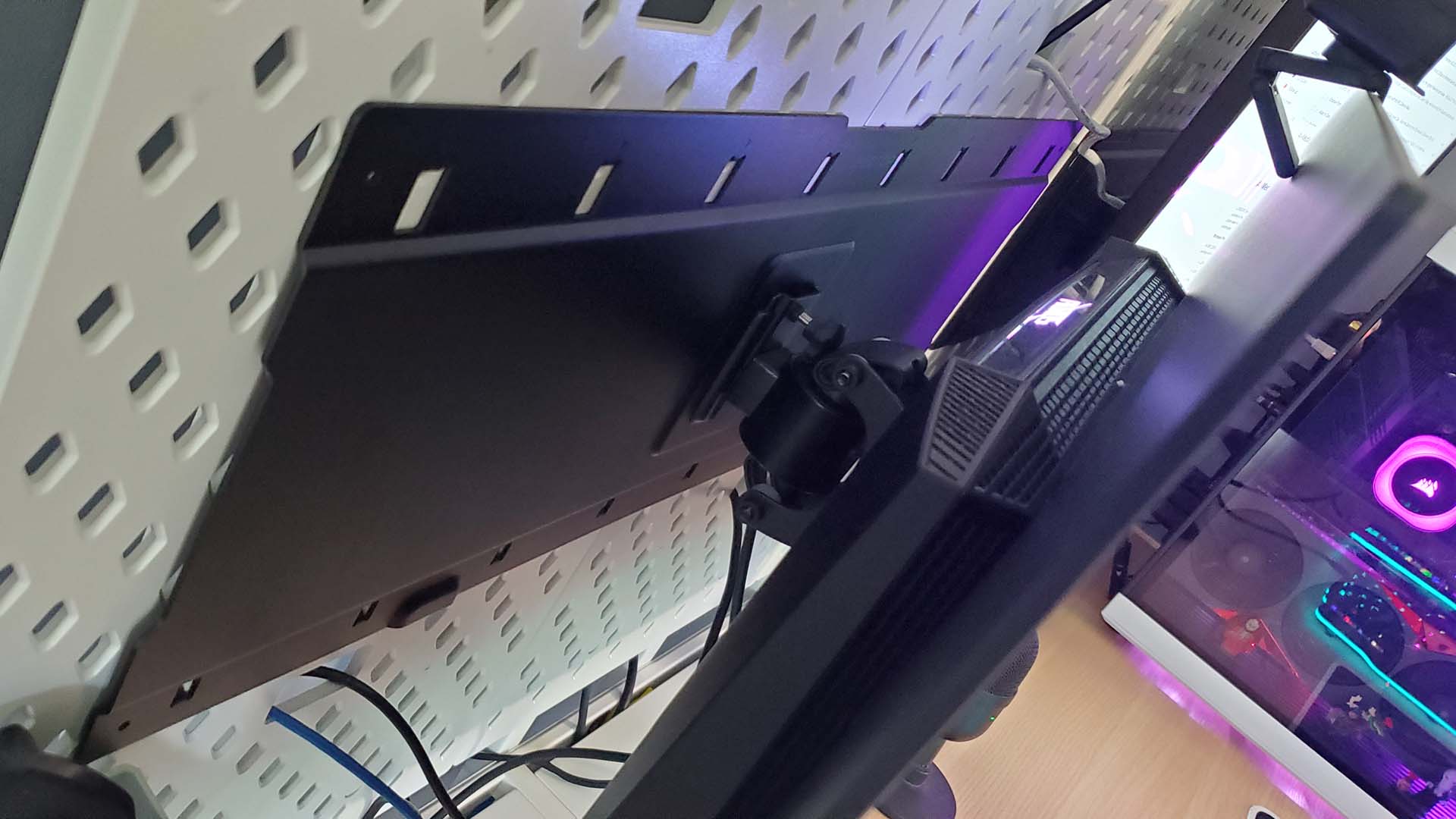
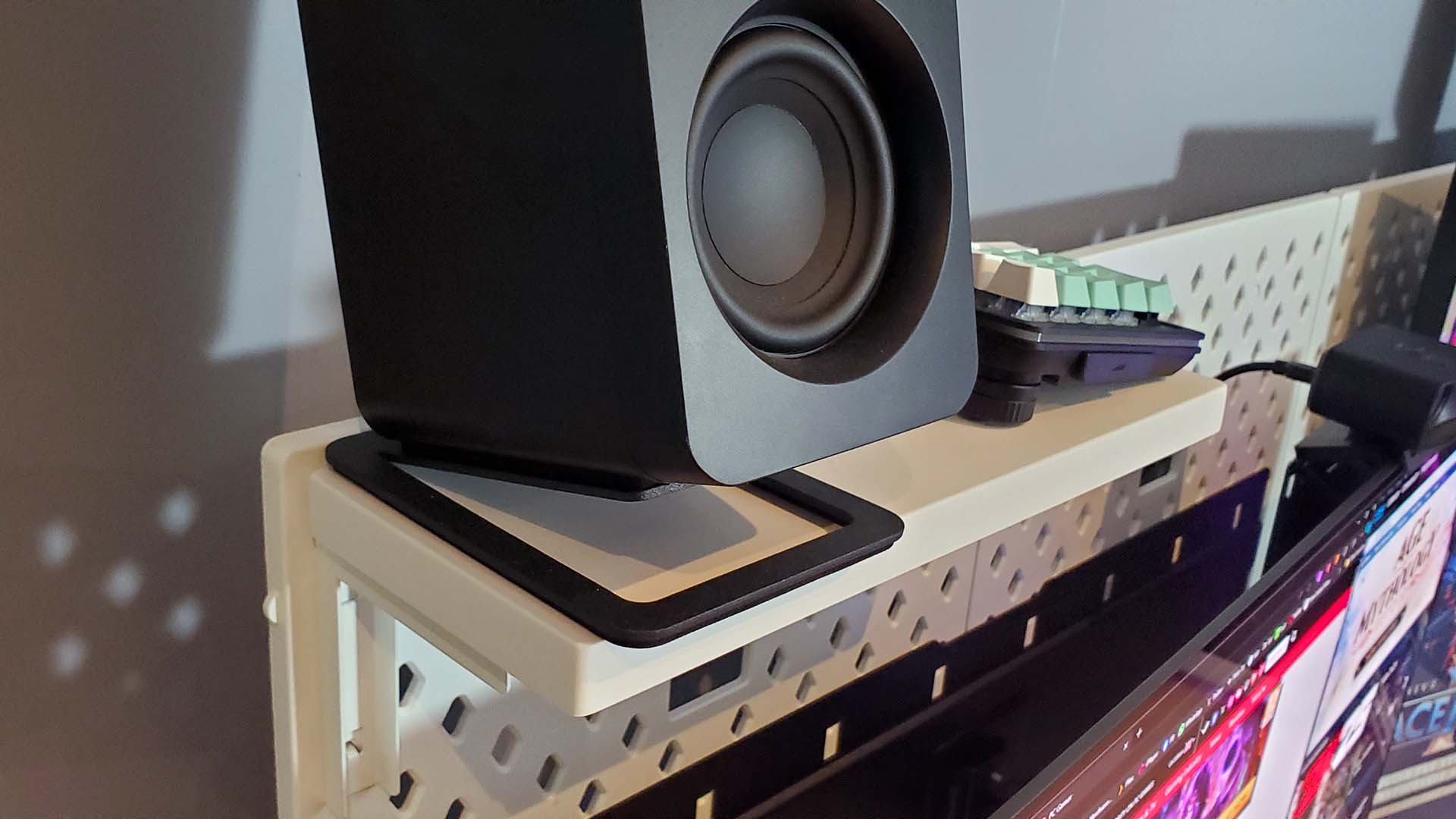
✅ You're after a pegboard desk without the cost of Corsair: The plastic pegboard initially feels flimsy, but it's absolutely strong enough to hold some seriously heavy monitors.
✅ You're a messy pup: The cable tidying, routing, accessories, and monitor clamps mean the Bifrost Elite can help even the most untidiest of human keep a clean desktop.
❌ You're after a budget desk: It may not be as pricey as the Platform:6, but you've got to be prepared to spend big if you want the full setup.
That concern has proved ill-founded over my time with the Bifrost Elite 160, however, as both monitors feel incredibly solid, as does the entire desktop. I'm not necessarily the most aggressive typist, but I can bash a key with the best of them, and the Bifrost will only wobble if I really try and push it. The screens barely move, and the cutouts in the pegboard allow me to route monitor cables to keep them free of even the cable tidy ducts and fed into the back of my PC. Which is a chonky beast though has never felt perilously perched atop the Dezctop desktop.
I'm also into the Bifrost accessories game, too. The headset hanger is a winner, especially now I'm using the Kanto speakers more, and the cupholder—which can fold away neatly—is very much a welcome addition.
So yeah, it's a good-looking, sturdy desk, with just a few tiny niggles that maybe keep it in the Secretlab's shadow. I will say I do like the size; at 160 cm wide it's got plenty of space without feeling like it's dominating my office room. The Corsair and Secretlab are just a bit too much for me. It is still an equally pricey ol' desk, however, and while I know furniture ain't cheap, this feels like a lot of money to drop on a desk. Though I know I would rather spend the money on the Bifrost Elite 160 than spend another $700 on the Corsair Platform:6, even if it does have maybe a more luxury finish.
The Bifrost Elite 160 is a great, solid, sitting/standing desk, with a ton of configuration options thanks to its accessories ecosystem. But it is a pricey beast, matching our favourite, the Magnus Pro XL, on price and missing just a little on quality. Though it has arguably made me a better/tidier person.

Dave has been gaming since the days of Zaxxon and Lady Bug on the Colecovision, and code books for the Commodore Vic 20 (Death Race 2000!). He built his first gaming PC at the tender age of 16, and finally finished bug-fixing the Cyrix-based system around a year later. When he dropped it out of the window. He first started writing for Official PlayStation Magazine and Xbox World many decades ago, then moved onto PC Format full-time, then PC Gamer, TechRadar, and T3 among others. Now he's back, writing about the nightmarish graphics card market, CPUs with more cores than sense, gaming laptops hotter than the sun, and SSDs more capacious than a Cybertruck.
